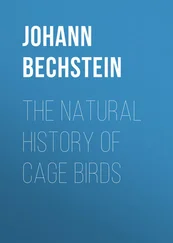1 ...7 8 9 11 12 13 ...21 Nor is the taxonomic mission as simple as it sounds. There are a few groups of organisms – birds and mammals come to mind – where large size and intensive study over many years means that the vast majority of species have been named and described. Even here there can be surprises, as when a new species of large ungulate mammal was discovered in the jungles of Vietnam a few years ago, or when in 2005 a pristine part of New Guinea was explored for the first time and a rare bird of paradise brought ‘back from the dead’. Bats are turning out to have many more species than was originally thought. I went with a research student into the cloud forest of Ecuador to see a new bat species with the longest tongue in the world that had apparently evolved to feed from (and pollinate) an extraordinary flower with a matching long corolla. It is illustrated in the colour plates. But as a rule there are very few new mammal or bird species to discover, and global concern is rather with conserving those that are known already: by any standard this is a big enough matter.
With other groups of organisms the story is different. The insects are the most obvious example: small, teeming and unnoticed they fill almost every habitat on earth. I will choose one example, from a cast of thousands. You have to be a special kind of person to love fungus gnats, but if you look at mushrooms growing in woods you will certainly see these tiny insects flying around the fungi. They are abundant. Most of us encounter these particular creatures as irritating ‘wormholes’ occupied by their larvae that might spoil an otherwise nice-looking field mushroom. But they still fulfil an important function in nature, and they provide a foodstuff for insectivores in their turn. They are a link in the chain. But how many species are there? And how do you tell them apart? Do they feed on lots of different fungi or are there specialists for particular kinds of fungi? All these questions require the attention of a knowledgeable taxonomist, a microscope, and skill. Tiny differences in the wings or the hairs on the legs may be crucial in the identification of a species. With luck, expertly identified specimens will finish up as collections in a cabinet marked Family Mycetophilidae (‘mushroom lover’) in the Natural History Museum. As to how many species there are, well, at the last count there were 531 different fungus gnats in the United Kingdom alone, and more being added all the time. It is scarcely surprising that there are many more species still remaining to be discovered in the wild. If a new bat can be discovered in Ecuador’s cloud forest, it is likely that nobody has even looked at the fungus gnats. And each species will have its own ecological story to tell, another biography to add to the narrative of the natural world. When it comes to status as a species, size doesn’t really matter.
A fungus gnat, Mycetophila , perched on a fly agaric.
Fungus gnat Mycetophila . Photo © Andrew Darrington/Alamy .
At this point one is supposed to put the beetles centre stage, because what is true of the fungus gnats is true of beetles many times over. The geneticist J. B. S. Haldane remarked, when questioned by a cleric about the putative properties of God, that one sure characteristic of the Almighty would be ‘an inordinate fondness for beetles’; this has become one of biology’s well-worn phrases. It is no less appropriate for all its familiarity. One-fifth of all species are probably beetles, most of them leading inconspicuous lives. There are somewhat less than half a million species of these animals named so far. When in the 1980s Nigel Stork collected insect species from the tropical forest canopy, he found that many of them had never been collected before – and that many of them were beetles. These were new species, needing a scientific name. It is a massive task just to make an inventory of beetles, let alone understand their biology.
Outside the insects, we can go on to tiny organisms like nematode worms, or smaller still to single-celled organisms – a whole universe of different biological organisations – or down to the smallest of all, the bacteria, where it may be necessary to use biochemistry or genetics to recognize species for what they are. Or we might go down into the depths of the sea where a start to sampling has hardly been made, and every animal is a specialist adapted to eternal darkness and great pressure. Nobody knows how many undiscovered species there are down there, although it is certain that there are many: a single trawl can reveal a dozen new crustaceans. A 2007 report from the Antarctic revealed many extraordinary new crustaceans that had escaped the attention of all marine biologists. There are huge numbers of unknown fungi – tiny ones many of them, or inconspicuous species hidden away under rotting logs. Something like two million species have been named and recognized, and there are certainly an equal number still to name. Many scientists believe that there may be five times that number, considering the habitats that are still so poorly known. There is so much to do, and so few people to do it. An estimate of the number of people who might know about systematics in the whole world came to only about four thousand. And I have not even mentioned fossils: a history of life also needs the myriad characters in the narrative of extinct animals and plants to be identified. So far, there is no indication that we are anywhere near the end of that process, even regarding the largest animal fossils, such as dinosaurs. The labyrinthine anatomy of the Natural History Museum might after all be appropriate to the world it represents, for the realm of nature is truly a castle of Gormenghast, with its half-explored wings, and obscure corners where few venture.
Many of the people whose names I had noticed on their offices or cubicles were soldiers in this war against ignorance. They were unseen heroes in a battle against insuperable odds, a battle unnoticed by the million people who pass through the public galleries. A lifetime of endeavour in these cells might be rewarded with the accolade of becoming an ‘authority’ – even a ‘world authority’. This means that the scientist and scholar knows as much about his chosen area as anyone – his views will be sought out on the identification of his organisms by scientists in Minneapolis, Manchester or Mombasa, be they beetles or bats. The notion of authority is a curious one. It is not something that one says of oneself, so I have never heard anyone introducing themselves as ‘the authority on mushroom gnats’. On the other hand it is quite often used to describe a fellow scientist: ‘Dr Buggins, the authority on toads’ and so on. Just working in a museum like the Musée d’Histoire Naturelle in Paris or the American Museum of Natural History in New York is no guarantee of becoming an authority. This distinctive label is hard earned by publishing and writing on the chosen subject, although it would be difficult to define a kind of critical mass of words when a young scientist passes into an authority. There is certainly no sex discrimination in the title these days, as there would have been a hundred years ago. It is one of those titles that cannot be bought, nor traded, nor given away; it just arrives, like grey hair.
Taxonomic scientists are often referred to by their speciality. Thus ‘bat man’ would be an expert on bats, ‘worm man’ on worms, and an anthropologist would naturally be a ‘man man’. I suppose I was known as ‘trilobite man’ even though it sounds like a creature from a horror film (‘worm woman’ sounds even worse). Entomologists tend to be even more specific because, as we have noticed, there are just so many insects; a beetle man is, generically, a coleopterist, but he might be a ‘carabid man’ if the Family Carabidae (ground and tiger beetles) was his favourite family. Since there are more than thirty thousand named species of the family there is plenty to know about this particular group, and it is not hard to imagine how somebody could spend their life getting to understand them. The small town I live in has about ten thousand inhabitants, and I am certainly unable to recognize and name more than a small fraction of them. I find it difficult to imagine being on intimate terms with three thousand people, let alone thirty thousand. When a new species is named and described it has to be distinguished from all the others described earlier; and, not surprisingly, mistakes are occasionally made. I once named a trilobite Opipeuter , only to find that the same name had been used a year or two earlier for a South American lizard. It is equally unsurprising that taxonomists tend to be obsessive about what they do. You would have to be to remember the details of so many hairs on so many legs.
Читать дальше












